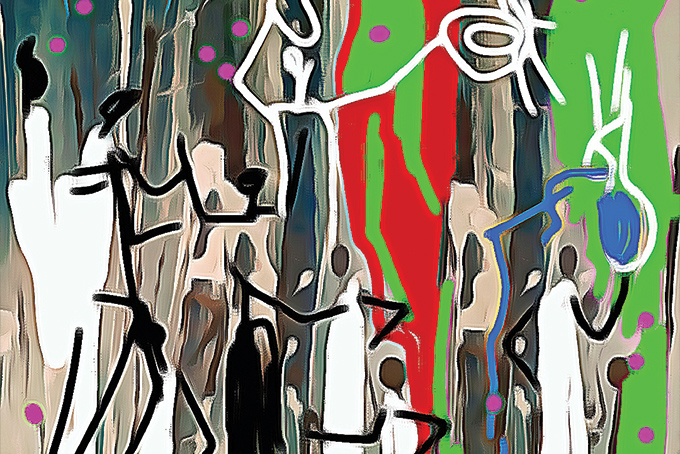In just a short period of time, the blockchain has seen immense technological growth and expanded our imaginations on what is possible—from gamified NFTs to digital fashion shows. As with any burgeoning space, ethical questions about the metaverse’s impact have arisen. While there is now mounting awareness of the harm conventional NFTs may cause to the environment—with sustainable cryptocurrencies gaining popularity in response—what is still unknown to most is the metaverse’s potential as an avenue for giving.
Artists on the blockchain have long been using their art for altruistic purposes, either by donating the proceeds of their sales or creating dedicated artworks for non-profit organisations. Now, a new and far more targeted form of charity is emerging. Philanthropic decentralised autonomous organisations—or DAOs—are reshaping how we give in the metaverse.

Community Banks
To put it simply, DAOs are collectively owned Internet funds. Picture a bank shared among a community into which every member puts money—in this case, cryptocurrency. Each person decides how much they want to donate and the total sum can then be used to finance any project of the group’s choosing. Regardless of what they contribute, every member of the community has an equal say in where the funds go.
This democratic distribution model, which is not accessible for charities that have a centralised board, is the first of many unique traits that render DAOs such effective platforms for charity, since it allows like-minded people to congregate and easily pool resources. The Big Green Dao, for example, is one of the first, and the biggest, organisations in the space, focusing entirely on food scarcity and liberation.
“DAOs can act as effective emergency funds due to cryptocurrency’s immediate, borderless and traceable nature”
“Another draw that DAOs have is that they allow for transparency,” explains Christina Chua, co-founder and CEO of So- Far, an NFT marketplace for fine and new media artists on the Solana blockchain. “When donating money, donors would like to hold charities accountable for where these funds go. The mechanisms behind DAOs alleviate this pressure as every proposal and monetary decision is voted on in plain sight and can be viewed openly.”
DAOs also facilitate quick distribution, which is especially useful in urgent scenarios of need—like the crisis in Ukraine. “Cryptocurrency communities are reliant on Twitter, one of the fastest, most responsive social media platforms,” notes Chua. “Information aggregates quickly and can spread like wildfire, which is crucial for time-sensitive philanthropic projects such as providing aid to people miles away.” In the same vein, DAOs can also act as effective emergency funds, due to cryptocurrency’s immediate, borderless and traceable nature.
As seemingly perfect models for charity, what could be holding DAOs back from reaching their full philanthropic potential? At present, the biggest hurdle to overcome is the lack of incentive for donations. On the blockchain, where markets are saturated and the spotlight shines on NFT trading, donors expect something in return for the petrol and transaction fees incurred—which DAOs in their most conventional forms are unable to provide.
Incentivised altruism
There are, however, alternative forms of charitable DAOs that would appeal to the art-loving set. The rise of creator-led philanthropic DAOs, such as Maxity.io, is one example. These DAOs work similarly as the regular variety, but offer NFTs or cryptocurrency tokens in exchange for a donation—a great option for those seeking to build an art collection while simultaneously channelling their money towards causes they believe in.

Chua concurs: “When artist- and creator-led NFTs align with charitable causes, buyers naturally gravitate towards them. People have an emotional response to art, which is akin to their sentiment towards giving.”
The blockchain may have garnered a reputation for being solely profit-driven, but it has served well as a platform for transcending geographical boundaries to extend a helping hand to anyone in need. As innovation on the metaverse continues to proliferate and unearth new ways of redistribution, the future of giving appears bright indeed.





